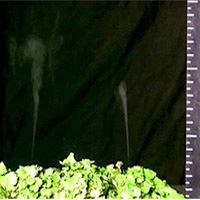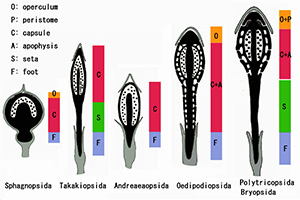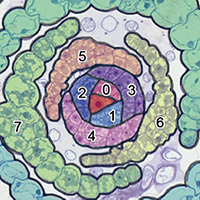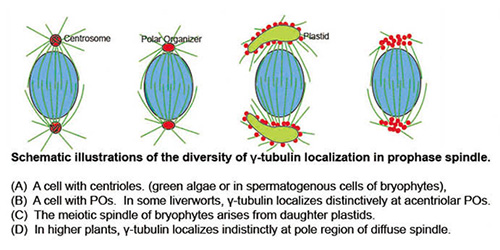Research
Taxonomy and Ecology

We conduct taxonomic research based on comparative morphology and molecular phylogenetic r analysis. We conduct taxonomic research based on comparative morphology and molecular phylogenetic r analysis. We manage the Herbarium of Hiroshima University (HIRO). We have over 500,000 bryophyte specimens collected over 100 years.

We are studying the process of fertilization of bryophytes in the field. We discovered that some liverworts release sperm into the air. After the sperm fall to the wet ground, sperms shed their cell walls and begin swimming. Currently, we are working on elucidating the reproductive isolation mechanism of bryophytes through artificial fertilization experiments.
We are conducting a distribution survey of alpinebryophytes. We are also conducting monitoring surveys in Fukushima Prefecture using the accumulation of radioactive materials in bryophytes, and investigating the genetic effects of radiation on bryophytes.
Morphology and developmental biology of bryophytes

Bryophytes and vascular plants have had different evolutionary histories spanning more than 400 million years, and the structures and functions of their tissues and organs are also significantly different from each other. We use optical tissue sections, electron microscopy, etc. to observe the tissue structure of bryophytes in detail, and conduct research to explore the relationship between structure and physiological properties, the direction of morphological evolution, and the search for new taxonomic characters.

We are conducting research on the relationship between the control of cell division plane and plant body plan.. Phyllotaxis in vascular plants is produced at a multicellular meristem, whereas bryophyte phyllotaxis emerges directly from a single apical cell (AC) that is embedded in a growing tip of the gametophyte. The AC is asymmetrically divided into itself and a single 'merophyte', producing a future leaf and a portion of the stem. We examined the moss species, which exhibit 1/3 (120 degree), 2/5 (144 degree), and 3/8 (135 degree) spiral phyllotaxis, respectively and have indicated that the transition of the division plane of the AC that occurs at a certain rotation angle roughly coincides with the species specific phyllotactic angle.
Diversity and evolution of plant cell division system
We are exploring the evolutionary process of cell division in the lineage of land plants by elucidating the diversity and molecular mechanism of mitotic and cytoplasmic division in bryophytes and ferns, we are exploring the evolutionary process of cell division in the lineage of land plants. As early land plants developed a system adapted to land, they ceased to form cenriolar-centrosomes, which serve as the base apparatus of flagella, except when forming cells with flagella, and instead formed spindles on the surface of chloroplasts. During the evolution from monoplastidic cell system (cells with one large chloroplast) to cell system with many small chloroplasts, the spindle microtubule-forming system might shifted to one that does not require scaffolding organelles.
